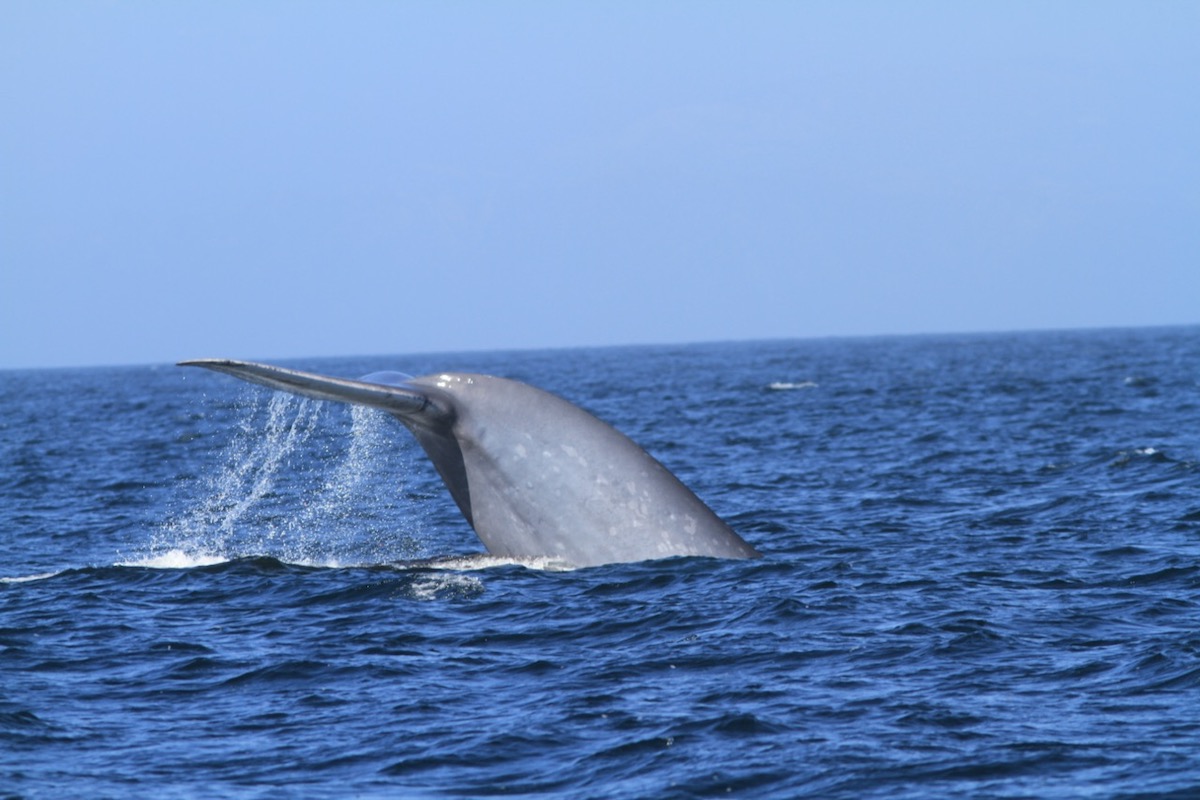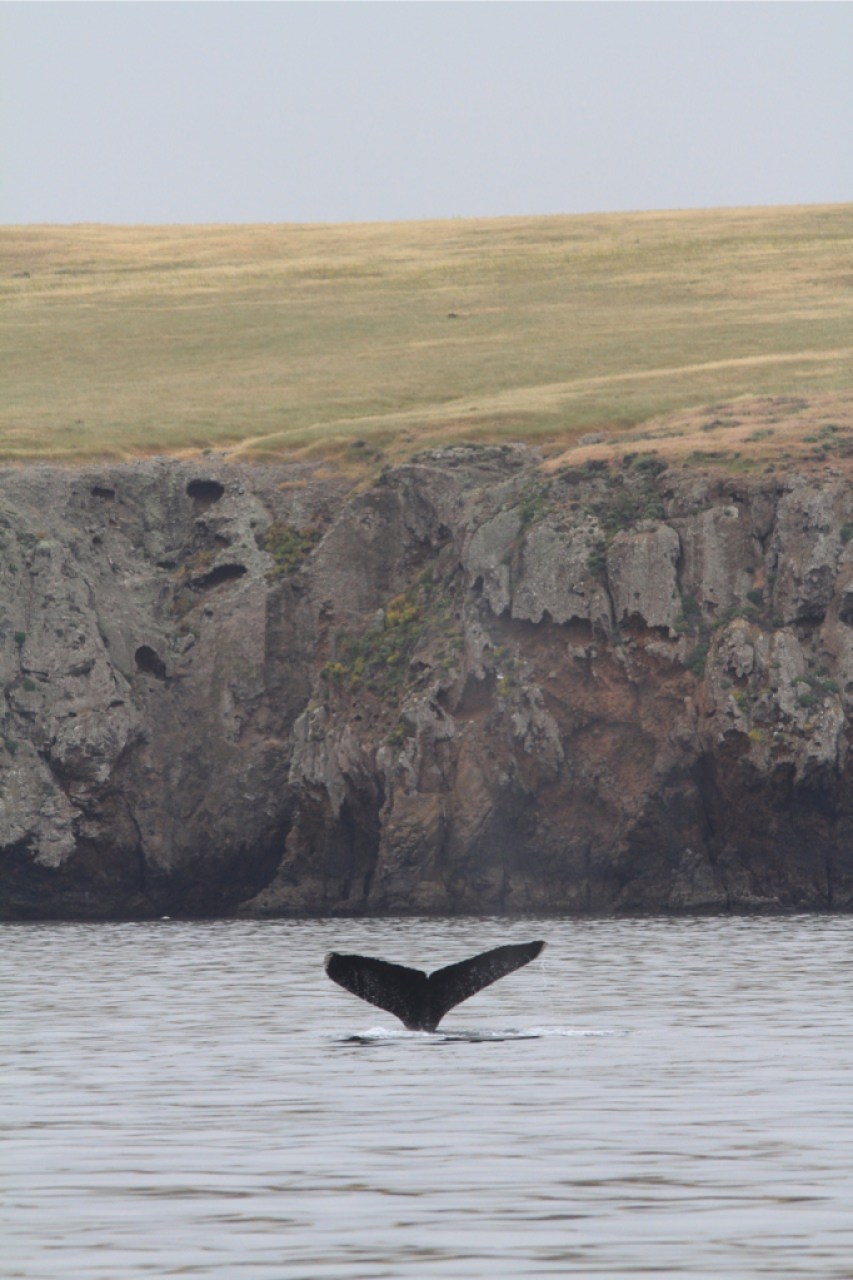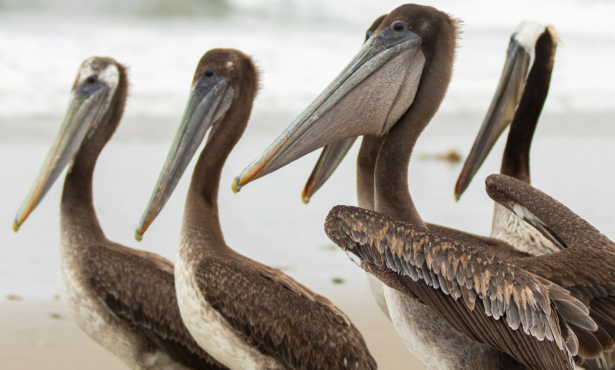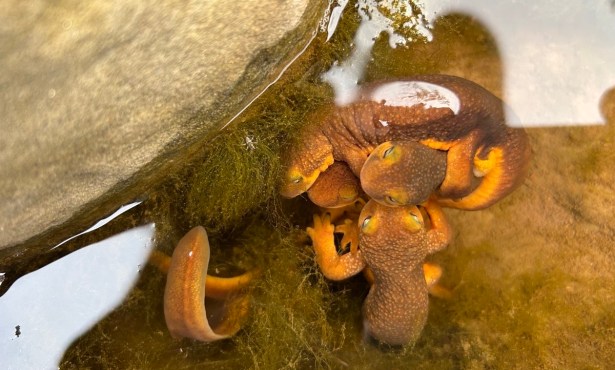A Whale of a Designation
Whale Heritage Area Comes to the Santa Barbara Channel

Several years ago, while kayaking across the Santa Barbara Channel, I was extremely fortunate to come across two humpback whales just southwest of the southbound shipping lane, their powerful spouts seen easily on a glassy day on the channel. They were feeding, rounding up a huge ball of baitfish in a broad circumference, followed by a large pod of common dolphins, a rambunctious group of California sea lions, opportunistic Brandt’s cormorants, and aerodynamic black-vented shearwaters. It was a thrilling display of pelagic wonders feasting in one of the best places in the world for marveling at marine mammals.
That experience, and others like it, is just one of so many reasons why the Santa Barbara Channel was recently awarded with Whale Heritage Area (WHA) status through the United Kingdom–based nonprofit World Cetacean Alliance (WCA) and World Animal Protection (WAP). Announced on October 20, it’s the ninth such designation in the world. The other eight WHAs include three in South Africa and one each in Australia, Costa Rica, Canary Islands, and the Azores. The only other one in the U.S. is Dana Point, which was designated in January 2021.

“The designation of the Santa Barbara Channel as the ninth Whale Heritage Area in the world will highlight the region’s commitment to promoting responsible ecotourism, providing more ocean educational opportunities, supporting ongoing research and conservation efforts, and honoring the timeless cultural connection we have to whales,” said Holly Lohuis, co-director of the WHA, who spent more than two years on the application process. “As a whale heritage area, even more international attention will allow for tourists to support community-driven conservation through responsible tourism where the popularity of whales, dolphins and porpoises can help address some of the local and global environmental concerns.”
Located in the Southern California Bight, the Santa Barbara Channel is teeming with rich marine biodiversity. From Point Conception to Point Mugu, it stretches for 70 miles and on average is 25 miles wide between the mainland and the northern Channel Islands: Anacapa, Santa Cruz, Santa Rosa, and San Miguel Island. Its deepest point, located in the western center of the channel, is roughly 1,500 feet, a deep, long underwater canyon that provides food for a throng of marine species. The unique oceanographic conditions mixing with large current systems circulating and colliding with the vertical upwelling make the channel an extremely productive feeding area for visiting whales and resident dolphin species.
It is believed that a third of the world’s 90-plus species of cetaceans have been documented in the Santa Barbara Channel, around 27 different species. Species seen annually are baleen whales such as blue, fin, humpback, gray, and minke. Rarely seen whales are Bryde’s and sei whales. Frequently seen dolphin species are both long- and short-beaked common dolphin, bottlenose, orca, Pacific white-sided, and Risso’s. Rarely seen are the northern right whale dolphin, false killer whale, and pilot whale. There are two species of porpoises: Dall’s and harbor porpoise. Occasionally, toothed whales such as sperm, Cuvier’s, and Baird’s beaked whales are seen.
“I am thrilled that the Whale Heritage Area has come to fruition, especially because my late husband, Fred Benko, first promoted the Santa Barbara Channel as a safe whale-watching destination,” stated Hiroko Benko, owner of the Condor Express. “In many ways, Fred was a visionary, leading by example in the construction of the Condor Express, which promotes safe whale-watching, as the boat has no propeller. He would be very proud of our local communities uniting for the conservation of the whales, dolphins, and porpoises off the Santa Barbara coast.”
The WHA has nothing to do with any increased regulations in the Santa Barbara Channel. It is purely a designation recognized by the WCA and the WAP. In the U.S., cetaceans are already protected under the Marine Mammal Protection Act, and some of the species listed above have additional protections under the Endangered Species Act, such as the blue whale, the largest animal on the planet. For more than 200 years, whales were hunted for their blubber and meat. Many species were staring at potential extinction. The comeback of the great whales (baleen whales and sperm whales) is one of the most important conservation success stories over the past 40 years.
“I want to remind those who question the value of whales and dolphins that we have come to appreciate the ecological role whales play in enhancing ocean productivity through their release of fecal matter,” said Lohuis. “Their iron-rich poop provides needed nutrients for phytoplankton. And the more phytoplankton means a richer, more diverse marine food web, including a higher biomass of targeted species of fish.”

Moving forward, the goal of the WHA in the Santa Barbara Channel is to raise awareness about the importance of whales, dolphins, and porpoises; their role in enhancing ocean productivity; and their climate connection in sequestering carbon. Through education, research, and sustainable practices, the WHA will reach out to inspire the communities of Santa Barbara and Ventura Counties and visitors alike to appreciate and celebrate the presence of whales in the Santa Barbara Channel.
“Whale Heritage Areas are becoming the gold standard for responsible whale-watching destinations worldwide,” said Jean-Michel Cousteau, president of Ocean Futures Society and honorary president of World Cetacean Alliance. “But they also have so much more to offer. By interweaving natural and cultural elements and placing communities at their very heart, these areas will become places where people respect, celebrate, and protect cetaceans and their ocean home long into the future. I am very excited to finally have one of these Whale Heritage Areas in my hometown of Santa Barbara.”
For more information, see sbwhaleheritage.org.




You must be logged in to post a comment.